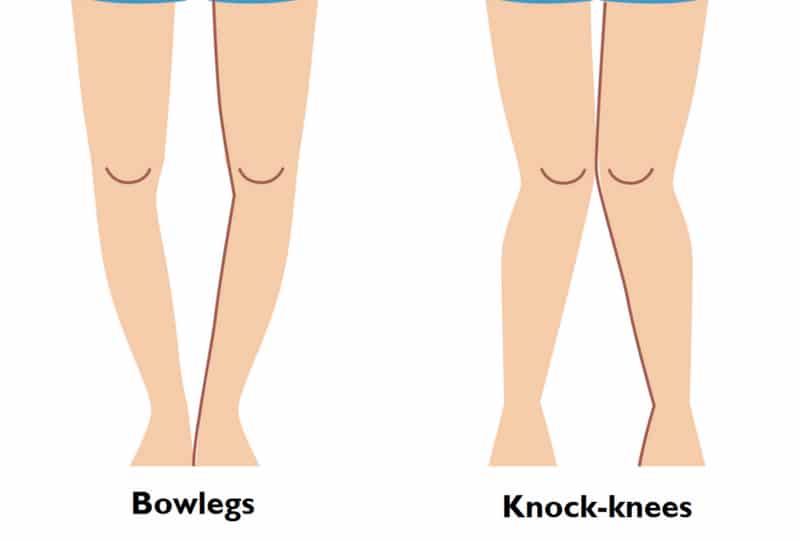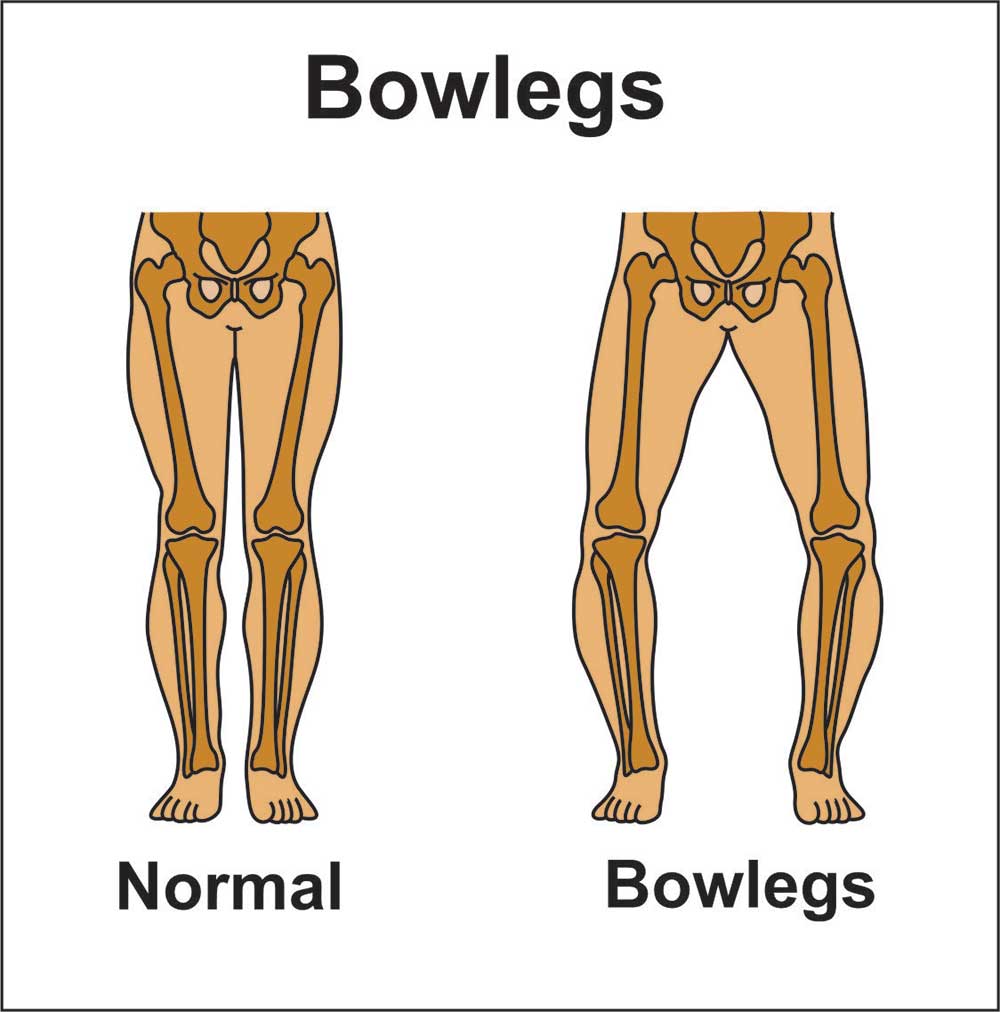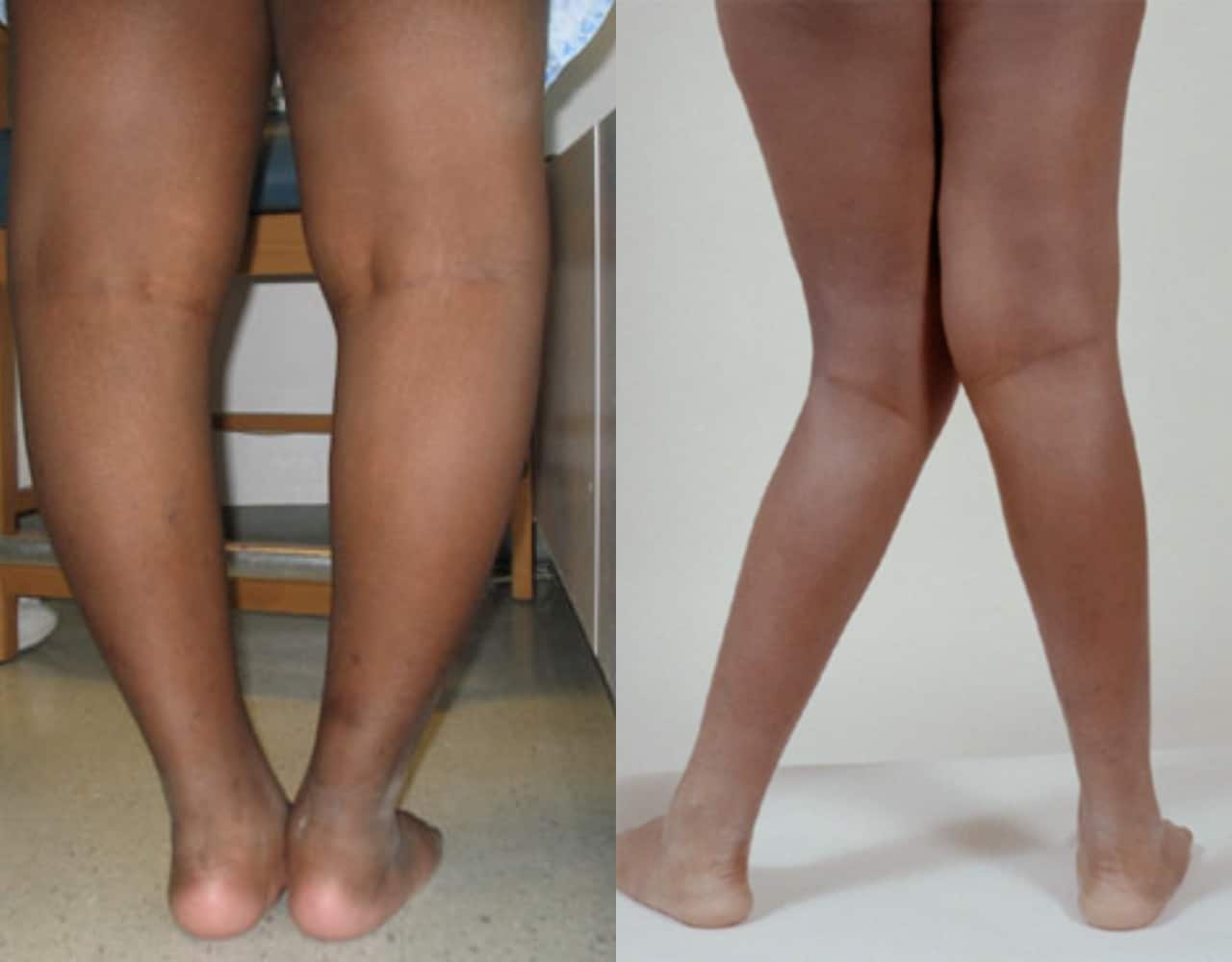Bow Legged(Genu Varum) Treatments in Babies
What is Bowlegs (Genu Varum):
The babies generally are born with bow-legged issues. It happens due to the position of child in the womb. Genu varum means that the knees are outward, having more space between both knee when they stand. It is a condition that goes away by age 2. However, if this does not happen, there is a treatment to correct the issue.
The bow legs or genu varum is the condition wherein the child’s legs are curved outwards. This results in a wider shape in between the legs. When your child stands with the feet and legs, the knees in such situations will stay apart. It shows the child is suffering from a bow leg issue. They are generally familiar to toddlers and infants. The condition is rarely serious. However, if it does not go away on its own, you must visit a healthcare provider to start treatment as soon as possible.
Common key take away from here are as
- Inward curvature of leg bone known as bow leg.
- At the time of birth, it is a normal phenomenon.
- Usually, it corrects at the age of 2 years
- If not corrected spontaneously then it may be due to some other causes.
Type of bowing:
Physiological:
- < 2 years of age
- It is bilateral & symmetric,
- Involve femur & tibia both
- No lateral thrust during walking
- Correct spontaneously with growth
Pathological:
- Intercondylar distance (distance between both knee joint) is <6 CM in standing with forward facing patella & medial malleolus touching
- It occur because of several reason like vitamin D deficiency, Blount, etc.
Symptoms of Bowed legs in babies:
A significant sign that the baby is suffering from bow legs is the appearance of the knees. In such situations, knees will stay apart even when the kid joins the feet and ankles together. Besides, the case will be much more obvious when the kids start walking. Sometimes the children might walk with their toes pointed inside.
However, there is no chance that the bow leg will result in any pain. They don’t affect the ability of the kid to walk, crawl or run. You need to visit a healthcare provider if the issue does not go on its own by age 2.
Common Symptoms in Bow Legs are:-
- Children with bow legs walk with wide-leg apart.
- The knee joints will be not touching to each other during walking.
- Parents may be worried about appearance of leg.
- No problem in walking & running.
- Bow leg do not cause any pain or discomfort.
- The child will not have any other symptoms.
- If this problem appear in teenager/ adult then individual may develop pain in joint.
- If it occurs because of some other reason than symptom will be according to aetiology.
- If child have vitamin D deficiency then child will have muscle pain, weakness, easily fatigue.
How Bowlegs are Caused?
There can be a lot of reasons that contribute to the bow legs issues. The most common one is the physiologic genu varum. The baby, while developing in the womb, stays in a crowded position. Thus some of the baby’s bones have to rotate while in the uterus to fit in the small space.
Genu varum, in simple terms, is the expected development phase of the child in the womb. However, if the legs do not straighten by the age of two, then there are different reasons which can include
- Blount’s disease
- Rickets
- skeletal dysplasia
- Lead poisoning
- Other bone issues
What causes a bow leg?
- When the child are born, leg in most of the babies are bowed and twisted.
- It happen because of position of baby in mother womb.
- It is being considered as normal part of child growth & development. So it is known as physiological bowing.
- In healthy babies & who start walking early can have more degree of bowing.
- It resolve by the age of 18-24 months. Afterward leg move outward. That also resolve by the age of 7 year.
- Sometime this bowing can be pronounced & do not resolve.
- Pathological variety can occurs because of many reason:
- Vitamin D Deficiency (Rickets): Most common cause is nutritional deficiency of Vitamin D & Calcium but can also occurs because of genetic issues where Vitamin d is ineffective / less produced in body.
- Blount disease (proximal tibial physis growth disorder),
- Genetic bone abnormality (skeletal dysplasia),
- Osteomyelitis
- Proximal tibia physis (growth plate) injury
Who gets Bow Leg?
- Most of the new born will have some bowing in leg but that will in physiological limit.
- It may became more prominent and visible in overweight & early walker children.
- If child is less exposed to sunlight & have nutritional deficiency of vitamin D then they will have more chance to get bowing.
- Blount disease is also common in obese children with some familial tendency.
How Bowed legs can be Diagnosed?
- Child specialist will take detail history about duration of problem, vitamin d intake, timing of sun exposure, pain or any other symptom in child.
- Bowleg can be diagnosed just by seeing the curvature of leg bone and distance between knees joint.
- Usually no test is required in mild cases up to the age of 18 months.
- If intercondylar distance is more and persist beyond this age, then child need detail evaluation. Paediatric orthopaedic surgeon should be consulted for detail evaluation.
- X-ray is required to confirm the diagnosis and to diagnose the cause of the deformity.
- Blood investigation for Vitamin D may be required in some cases.
How Bow Legs Treated? Treatment options for Bowed Legs in Babies:
Once you have identified the symptoms, it will be better to visit the health care provider on time to start the treatment. Generally, those babies suffering from bow legs get rid of the issue on their own by 2. But the healthcare provider will keep on tracking the condition of the child. However, in the case of older children, there is a requirement for treatment that will depend entirely on the condition’s cause. Here the treatment can include special shoes, caste, splits, surgery, braces, or the treatment of the disease that leads to bow legs.
- Blount’s disease
The doctor will go ahead with the early treatment, using a leg brace or splints if required.
- Rickets
The healthcare provider will start with treating the child with the addition of vitamin D and calcium to the diet. Also, they might refer the kid to a specialist for treatment if the bow leg results from a genetic condition.
If the situation persists despite the treatment options, surgery might be required to prevent further damage and correct the issues. The surgery options include.
Non-Surgical Treatment:
- In most of toddler, bowing is physiological so no treatment is required.
- Reassurance about benign nature of problem & observation.
- It resolve by the age of 18-20 months of age.
- Braces are being prescribed but not so useful. This brace/ splint need to wear for long time.
- Vitamin D supplement in vitamin D deficiency.
Surgical Intervention for Bow Legs:
Indication of surgery:
- Reappear in teen age or adult
- Due to trauma, infection, Blount
- Very sever bowing / genu varus deformity knee
- If problem is sever & occur because of blount then surgery may be needed.
Type of Surgery Options in Bow Legs Treatment:
Guided Growth:
During the surgery, the surgeon aims to place a small metal plate inside the leg of the child. It will work to stop the healthy side’s growth for some time. Thus the unhealthy side can catch up to the development. After the child’s leg straightens with the natural evolution, the surgeon will remove the plate so that the growth starts to be expected.
In this surgery, a small plate or screw will be placed across to one side of physial plate (growing end of bone) so that with age deformity will be corrected then plate/screw will be removed. It can be done only in children before teenage.
Tibial Osteotomy
Sever deformity in teen age & adult need deformity correction by cutting & removal of small segment of bone and application of plate or ilizarrov ring fixator.
In the procedure, the surgeon aims to cut the shin bone, which is present below the knee, and then re-shape it to fix the alignment while the bone continues to heal. It is kept in place using screws and plates inside the leg, or casts can be positioned outside the leg.
Ultimately, the treatment of the medical condition will depend entirely on the reason behind it. Therefore, you need to identify the symptoms as soon as possible so your kid can get the support he needs and recover from the condition early.
Tips to Take Care of Children with Bowed legs:
- Oil massage, vitamin d, and calcium supplements will take care of in most cases.
- Sufficient intake of milk and exposure to sunlight is mandatory.
- Children with bowing should not be stopped from strenuous activity.
Conclusion
If your kid is suffering from the bow-legged issue and you wish to start with the treatment, then you can consider getting in touch with Trishla Ortho. They have got expert professionals who will ensure to come up with a customized plan. They will guarantee your kid gets the best possible treatment for recovering from the medical condition. They have years of experience handling medical conditions and helping children recover better. So to provide a kid with the best treatment and support, make sure you consider them to start the treatment as early as possible.





Frequently Asked Questions
How do I stop my Child from getting bow legs?
There is no prevention for bow legs. But you can prevent certain conditions that cause bowlegs. Get your child proper vitamin D through diet and sunshine to prevent rickets.
How Bow Legs can be Corrected Naturally?
Do exercises, stretch your muscles, physical therapy, vitamins all this will make your bone more stronger.
What happens if bow legs are left untreated?
Bow leg in new born correct naturally with age. If it is because of other causes then it will progress. then it may lead to pain, increased deformity, and many more. If proper treatment is done, then it leads to less pain and better walking.
Reviewed and Submitted by Dr. Jitendra Kumar Jain
Last updated on November 27, 2020
Dr.Jitendra Jain, MD and DNB (Orthopedics), president at Trishla Foundation, an NGO for treatment of cerebral palsy, and a Consultant Pediatric Orthopedic Surgeon & Cerebral Palsy Specialist at Trishla Orthopedic Clinic & Rehab Center.
Dr. J. K. Jain is a member of the general council at Dr. SMN university of rehabilitation, Lucknow, a member of the advisory board chief commissioner for PWD, Govt. of India (New Delhi), a member of the state disability research committee (U.P.), and a member of the committee of RCI, New Delhi. He has been awarded many awards, including the Dr.Bhagawan das memorial award, the spirit of humanity award, and the state govt. award for his services towards PWD, etc. Times of India has posted his work many times and mentioned him as one of the best doctors in the field of Pediatric Orthopedics. He helped many children recovering from cerebral palsy, just like comedian jay Chanikara, who is now able to stand and walk without any support, Abena, a Ghana girl with cerebral palsy, and many more. He also organized the National Wheelchair cricket tournament and created World’s first cerebral palsy village foundation in Prayagraj. He successfully treated 10,000+ children with various kinds of orthopedic disability, conducted 160+ free assessment camps, and produced a documentary film on cerebral palsy.
Walk in Appointments Available Daily
You can make an appointment online for video tale-consultation by fixing up an appointment at this website or you can visit the clinic to make an appointment in person and show to doctor with the care of social distancing at the given time.
Contact us
Call Us
0532-2468989
+ 91 9415014994
+ 91 8577873545
+ 91 9455001645
Email Us
totrishlaortho@gmail.com
Our Location
Dr. Jitendra Kumar Jain
Trishla Orthopedic Clinic & Rehab center, 182C / 350A, Tagore Town, Prayagraj (Allahabad) U.P-211002, India
